Electric Engines
| E.656.297 is leaving from Milan Centrale on 10 June 2000, with a set of Type X coaches. |

| The famous Elettrotreno ETR 302 Settebello runs beside the St. Mary Abbey of Chiaravalle, near Milan, with a special train Savona - Venice, on 9 February 2002. This train, the last survived of the three units built in 1952-60, presently lays unused and neglected since 2004. |
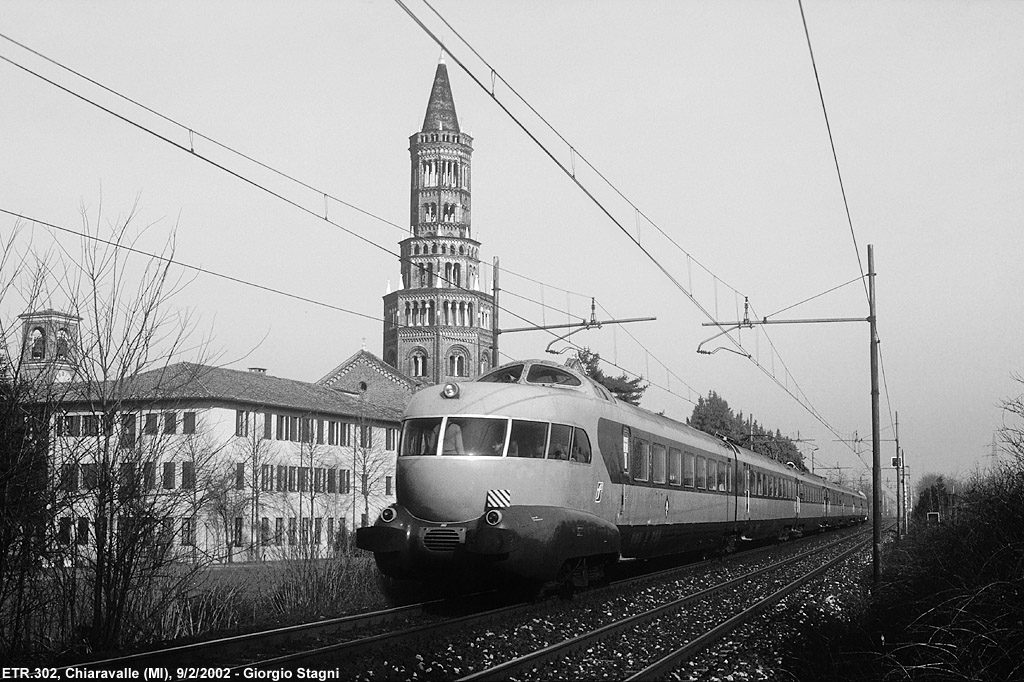
| The Bullona station of the Ferrovie Nord Milano was built in 1928 and abandoned in 2003 when the new 4-track line was available. Two traditional FNM trains of the Fifties are running on 5 May 1994. |
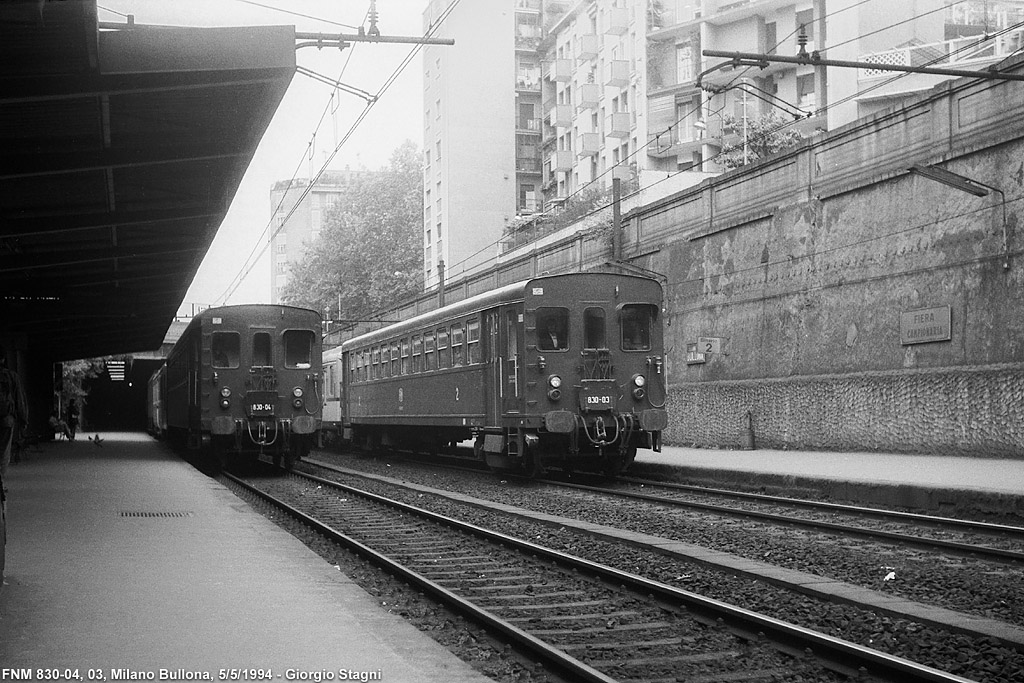
| Before the building of the modern 4-track line between Milan and Saronno, the station of Bollate showed a truly vintage aspect. A traditional train of FNM is arriving on February 1989 (photo G. Demuru). |
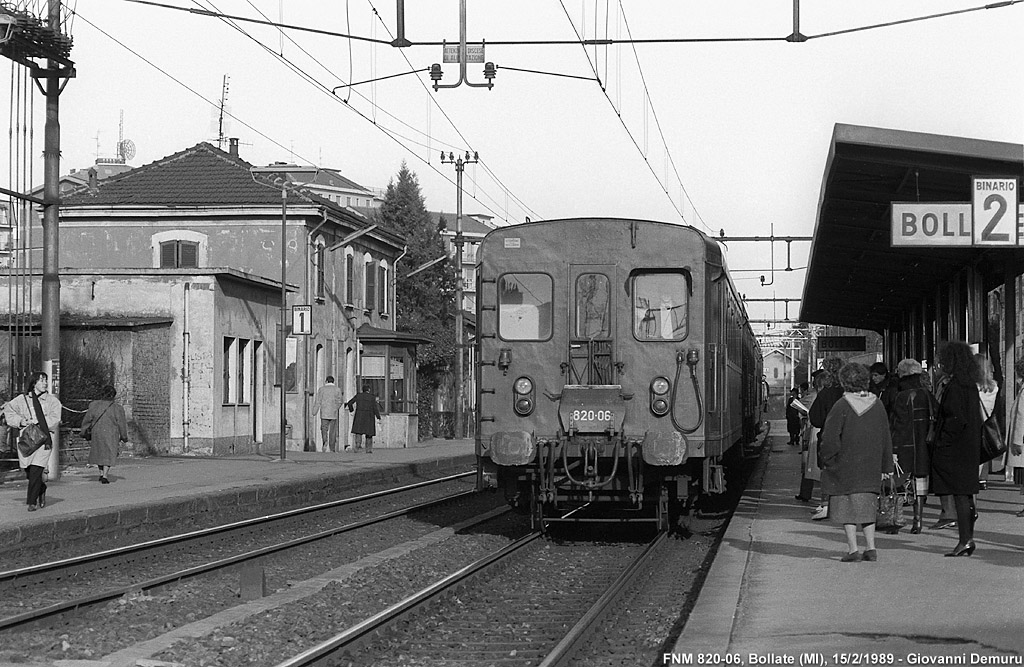
| The multivoltage Swiss unit RABe 1050 is arrived in Milan Centrale as Eurocity train Manzoni from Zürich Hbf, on 25 January 1993. |
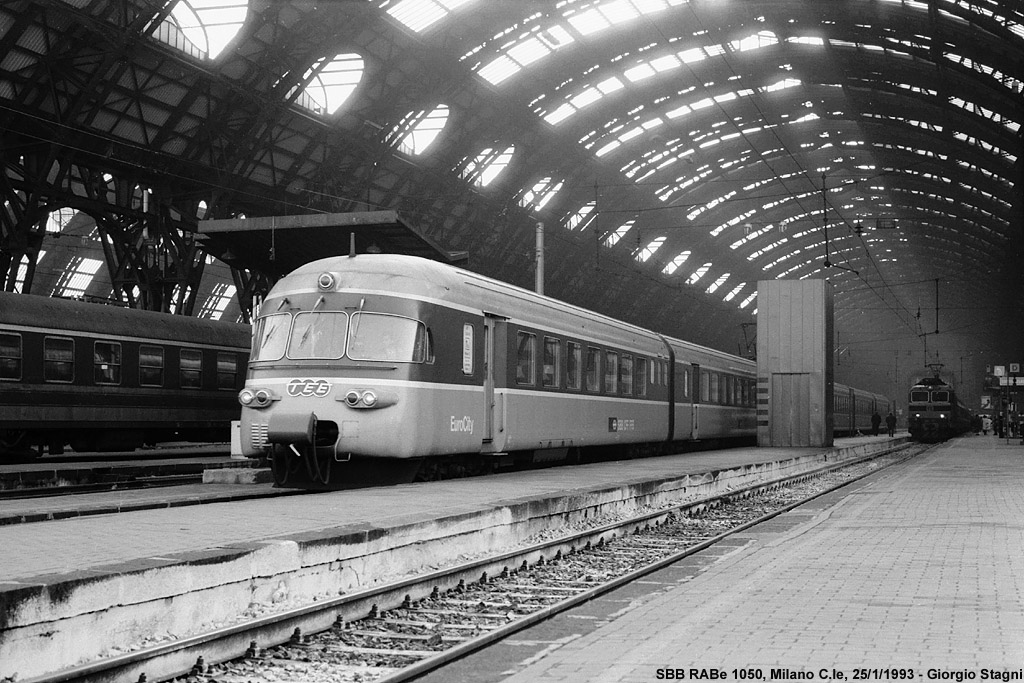
| The two Swiss RABe units to Lausanne are exceptionally pulled by an E.444 engine, in Milan Certosa, on 21 March 1993. |
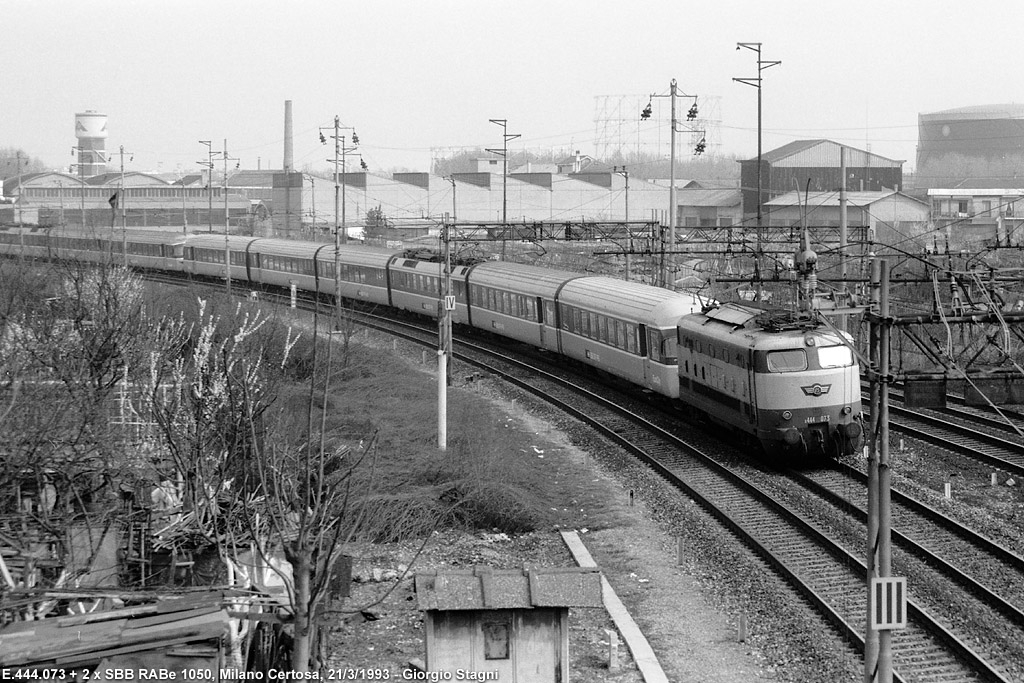
| ALe 540.003 carries out local services to Novi Ligure, in Tortona on 5 June 1999. |
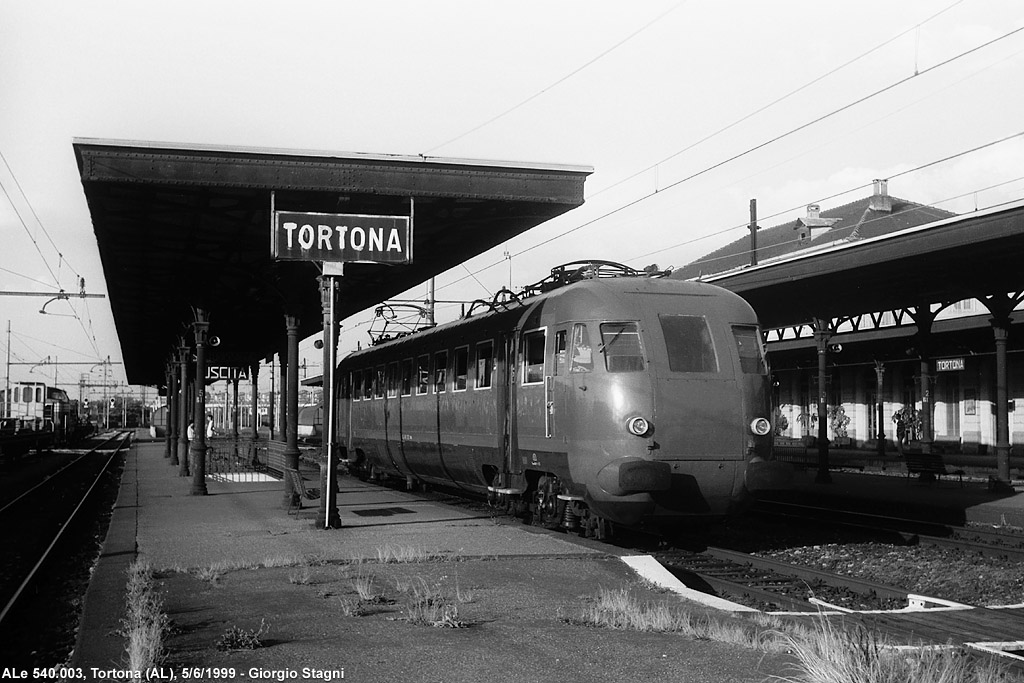
| The regional train Verona - Trento, made of ALe 840 multiple units, runs between the River Adige and the impressive face of the Ceraino gorge, on 13 September 1997. |
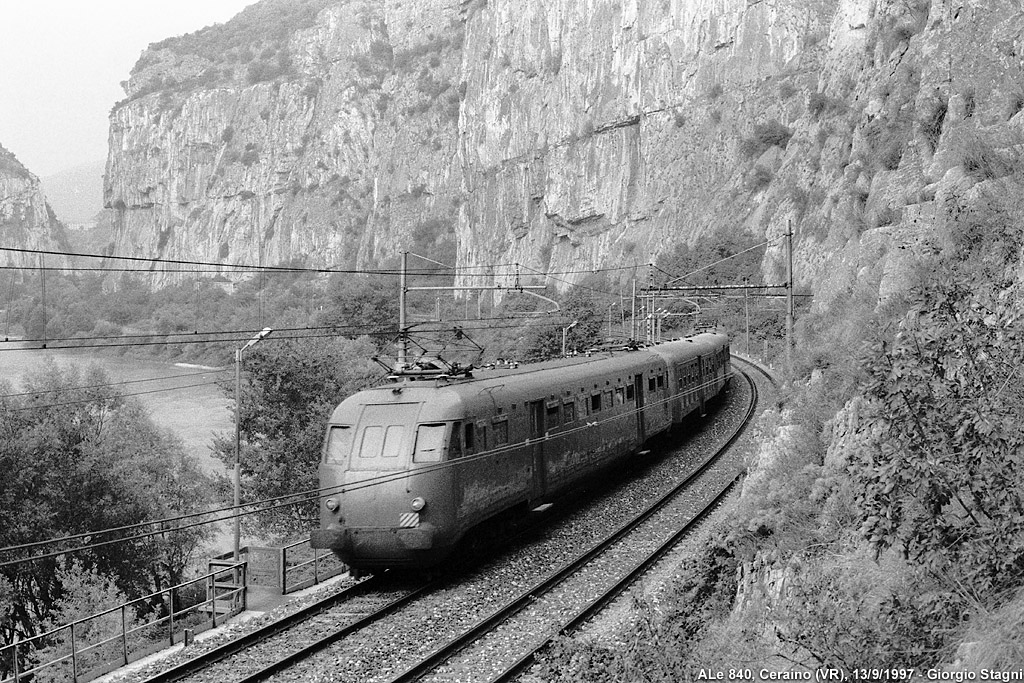
| The three types of electric engines that characterised the transition between the traditional railway of the Seventies and the first electronic locomotives of the Eighties: E.632.054, E.444.053 ed E.656.306 in Milano Greco on 9 october 1987 (photo G. Demuru). |
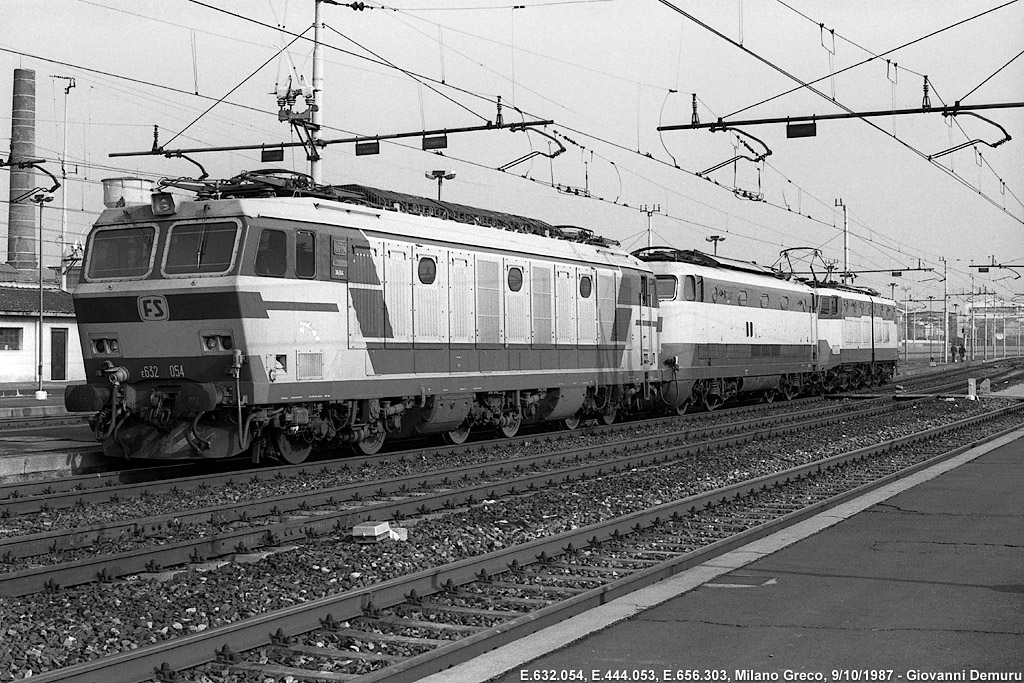
Travelling on a Railcar
Chapter 3 |
Foto 39-48/77 << Pag. precedente ^ Indice ^ Pag. successiva >>
[Index of Engines] [Indice della sezione / This Section] [Vai all'italiano]
